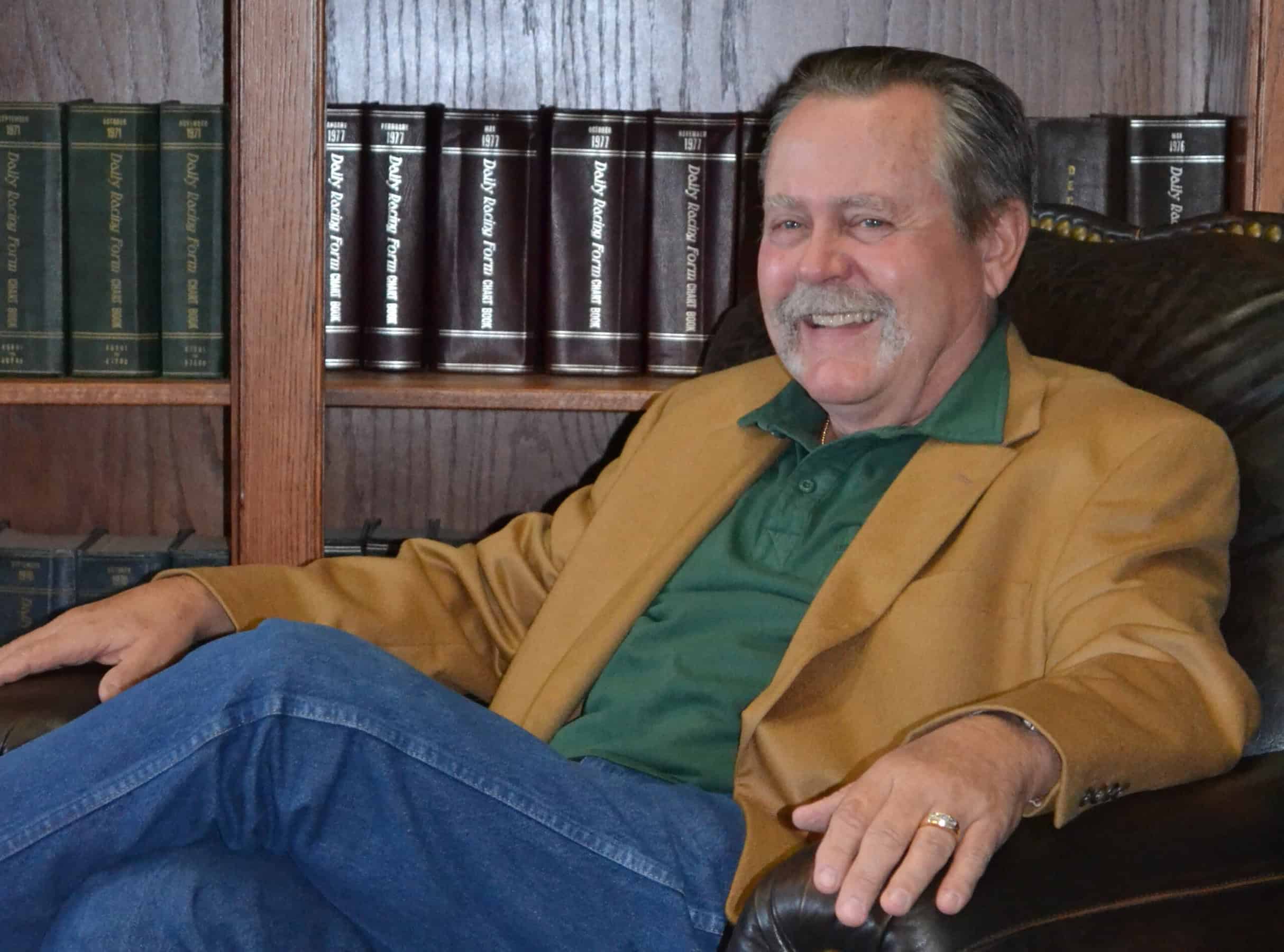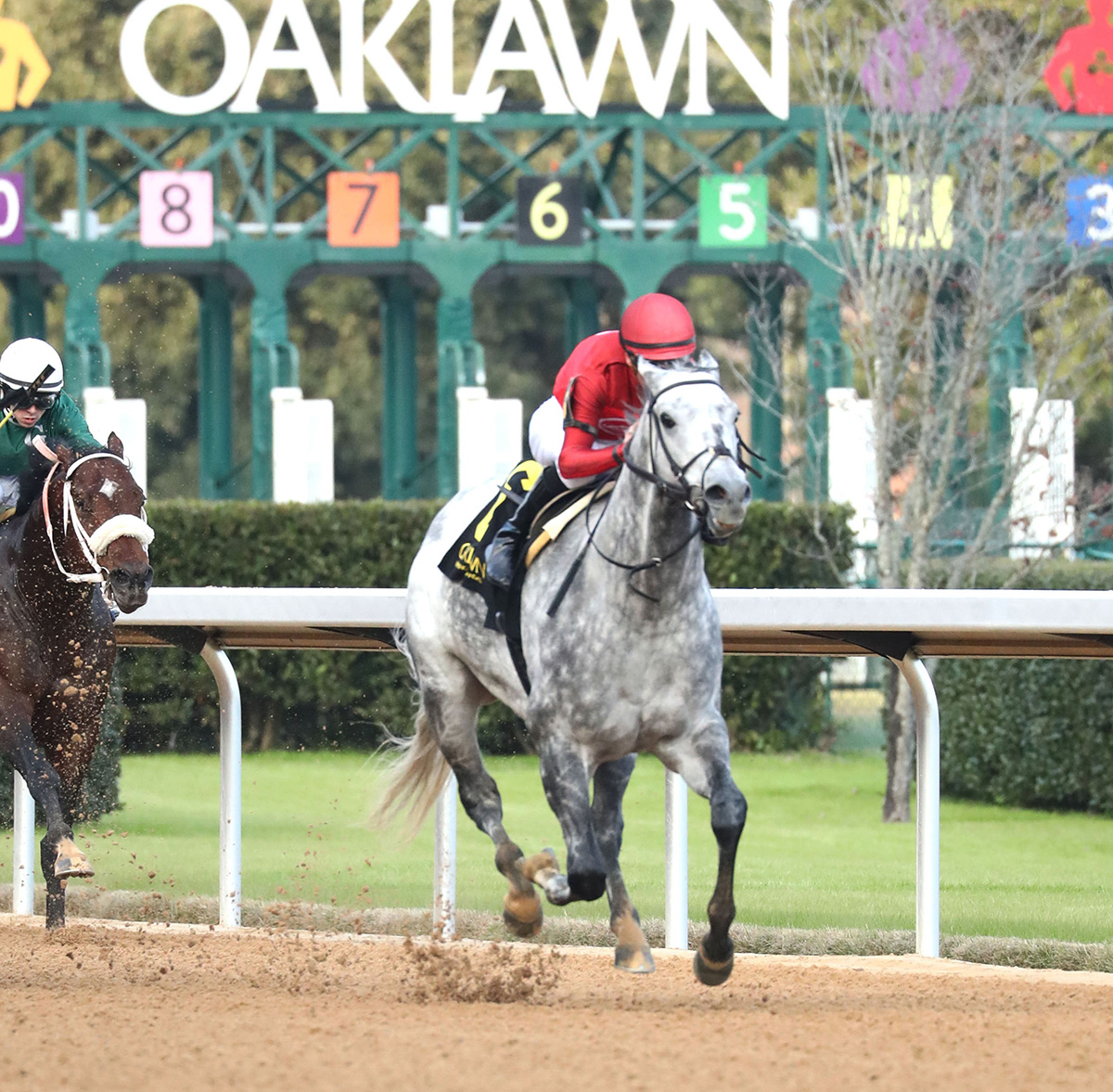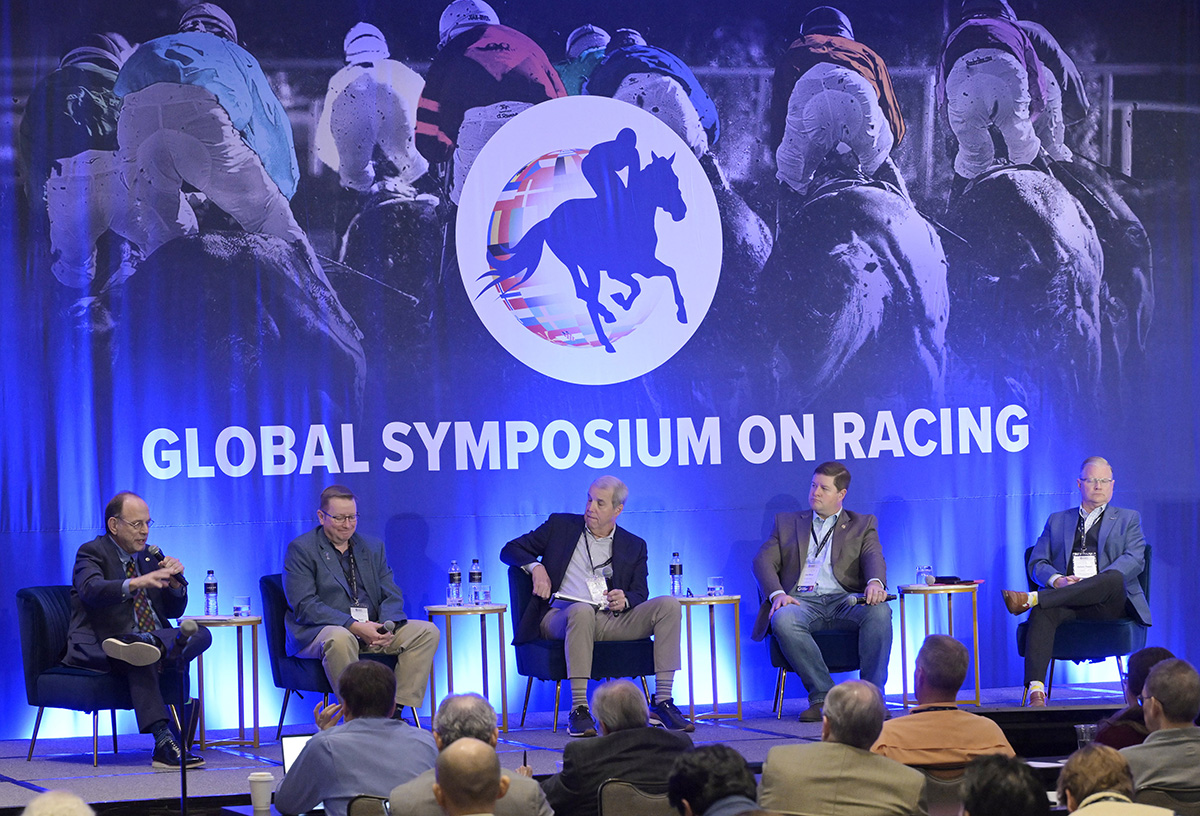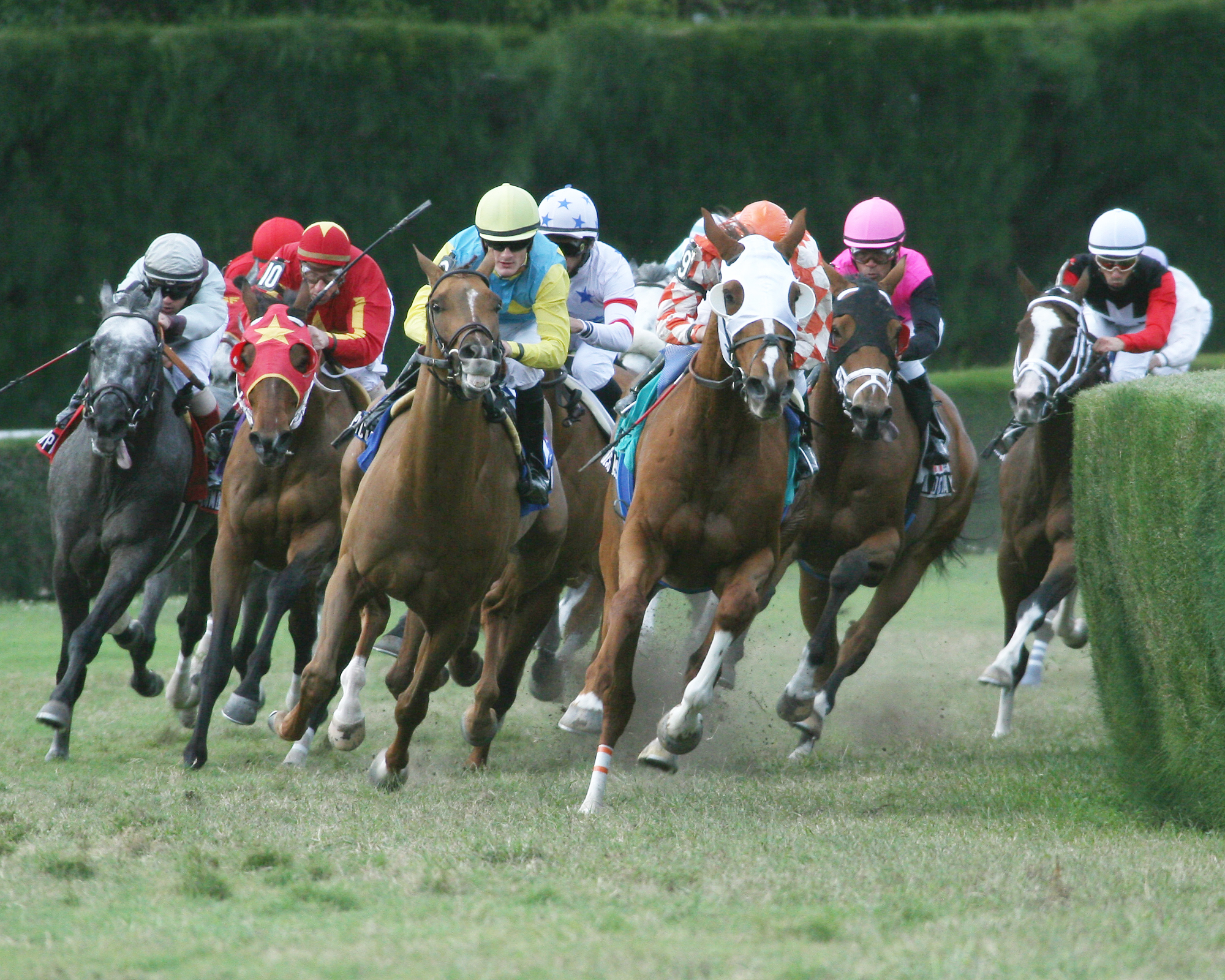BY GLENYE CAIN OAKFORD
After some 48 years in Florida’s Thoroughbred industry, Brent Fernung has experienced the business of breeding, buying, selling, and standing Thoroughbreds from the hooves up. Decades before he opened Journeyman Stud with wife Crystal and became president of the Florida Thoroughbred Breeders’ and Owners’ Association (20xx – 20xx), Fernung started on the end of a lead shank in the 1970s. He rose to management positions with Lasater Farm, Southland Farms and Sylvan Crest Stud before taking up the general manager role at CloverLeaf Farms II and eventually launching Journeyman Stud. Along the way, he became known for his talent at buying and reselling mares and a prescience for identifying stallion prospects.
Now, having concluded the relocation of Journeyman’s stallions—including perennially leading Florida sire Khozan to Ocala Stud—Fernung recently sat down with writer Glenye Cain Oakford to reflect on the Florida’s evolving stallion industry.
How did you end up getting Khozan?
Over the years, I’d always wanted to do something with Mr. Campbell. I’d met him when I was a groom at Lasater Farm back in 1977 or 1978. It was obvious he was a real classy guy and he was getting into the horse business.
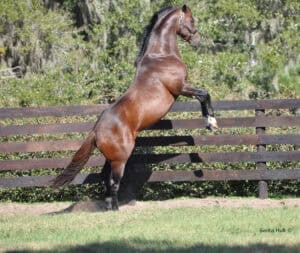
Khozan- ©Serita Hult
When I started messing around with these stallions, he’d buy a share or he always bred a mare or two to Wildcat Heir. Mr. Campbell also bought a couple shares in Circular Quay and had a couple stakes winners by him—which is incredible, because he wasn’t really a successful stallion.
So I kept thinking, “Man, if I could just find the right horse for Campbell, one that would work for me and work for Gil” – because there was a difference there. Gil’s eye went towards really top pedigrees, whereas I had always found it difficult to purchase those horses if they met my criteria.
When Khozan came along, I said, “Here’s a horse that not only has the kind of pedigree that Gil would like, he’s exactly the kind of horse I ‘m looking for.”
I hadn’t seen Khozan yet, but the three things I look for in a stallion are, first of all, talent—they’ve got to have talent—and second, pedigree. Finally, they’ve got to look like they’re supposed to look.
I heard Khozan was available and so I contacted Bradley Weisbord who was managing the business for Al Shaqab Racing, who owned him. I went up to WinStar Farm to look at him. He was a 3-year-old, and I thought he looked a little feminine; he just hadn’t matured out yet.
But all the pieces were there. He was a good-framed horse. He was a $1 million 2-year-old who worked nine and change [at the 2014 Fasig-Tipton Florida Sale]. And he won his only two starts in very impressive ways. I thought he was the best three-year-old on the East coast that year. I thought he’d have won the Florida Derby in his third start if he hadn’t injured himself.
Brad said they wanted to sell half of him. I didn’t have the kind of money to buy the whole 50% and I didn’t want to own less than that. Al Shaqab might have been willing to sell a quarter, but when you only own a quarter of a horse, you’re always at the whim of your partner.
I called Gil, and his response was, “Send me everything you’ve got on him. If it’s as good as it sounds, we’ll buy half.” I said, “Well, I’m going to buy a quarter of him, so if you don’t mind, we’ll split half.” He said okay, and that’s how we got him done. But without Mr. Campbell, there would have been no opportunity for me to do it.
You once said that when someone tells you, “This is a perfect horse for Florida,” you know you don’t want that horse. Why?
When they tell you that, they’re thinking of something that has some flaws to him. Maybe he was a good racehorse and really crooked, or maybe his pedigree is too light, or he had a lot of pedigree and no talent.
There are a lot of different ways people think, “Oh, that would be a perfect horse for Florida.” I want one where people say, “This horse would work in Kentucky” and try somehow to get him down here.
That’s pretty tough to do.
I’ve missed on a lot more than I’ve hit on. You’ve got to hit the ball where there’s nobody playing. You’re trying to get on base and in order to do that you’ve got to get a little lucky and you’ve got to work real hard at it.
I think I had another one like that in Uncle Chuck. We’ll see this winter. He died but I thought he had all the credentials that made him a perfect sire prospect. He was by Uncle Mo, he’s a half to Maclean’s Music, and he was obviously an incredibly talented horse.
Wildcat Heir was a similar kind of horse. He ran more than Khozan and Uncle Chuck, but he was similar in that he ran as a two-year-old and got injured and then was off until he was a four-year-old. Came back and won a Grade 1 stake at four.
We got approached by Taylor Made about him. They asked if I was interested in standing a horse in Florida, and I said, “Fellas, I don’t care who he’s a half-brother to, if he couldn’t run I don’t want him. Because that’s what I figured they were coming with. When they told me it was Wildcat Heir, I said, “Yeah, now HE would work.”
I understand you had to hustle a little to get Wildcat Heir. What happened?
I thought when Taylor Made’s guys left Florida that we had a deal. But when I went up to Kentucky in November to look at the horse, it turned out that WinStar wanted him. Doug Cauthen was running WinStar then, and so we sat down in a meeting with Doug and Bill Casner and Frank and Duncan Taylor. They asked me what I could stand the horse for. I said, “Between $7,500 and $10,000, and actually I’d probably split the baby and stand him for $8,500.”
Doug said, “Well, if we stand him at WinStar, we’ll stand him for $12,500 and fill his book.” So I’m going, “I can’t argue with that. I can’t fill his book at $12,500.” I said, “In the short term, that’s great. I think you’ll probably do better with him the first year. But when the second, third, and fourth years come along, if he becomes successful, he’ll be the best horse in Florida versus just another horse in Kentucky.”
Unless they do something that turns them into a leading sire, they always seem to level off [in Kentucky] real quick, because there’s so much competition.
Can you compare Khozan’s and Wildcat Heir’s success for us?
Wildcat Heir and Khozan had different paths to success here. In Wildcat Heir’s case, he had all that speed. They loved him at the 2-year-old sales right from the start and a lot of his best runners were running in California and New York, all over the place. That was an advantage for selling seasons, but it was a disadvantage because you didn’t end up with 30 of them down in Miami running in the summertime for the Florida Sire Stakes and you didn’t get your FTBOA stallion awards like you might have gotten.
When Khozan came out, he immediately became Florida’s horse. Probably a lot of that was the fact that Mr. Campbell had about 10 of them [at Gulfstream Park] that couldn’t wait to break their maiden, and then he had Liam’s Lucky Charm in that first crop who won… …the [FTBOA Florida] Sire Stakes [Affirmed] down there. The second year, we swept the FSS with Khozan fillies. Everybody saw him as a horse you could take down there and immediately be competitive in the big races.
It’s interesting how many different mares Khozan seems to work with. Can you expand on that, with regard to the Florida market?
If you’re somebody paying attention to crosses, he’s so easy to cross. For instance, if you’re looking at Storm Cat-line mares, he’s had a lot of success with those, and in particular with Stormy Atlantic mares. But not just with them—with others, as well, like Wildcat Heir mares.
When I first started breeding mares to him, I wasn’t paying a lot of attention. I knew what I was getting myself into, but it felt more important to get foals on the ground than to be Federico Tesio. So I bred a couple of Congrats mares to him, which was 2×3 inbreeding, and all of a sudden, wow, these things can really run!
He’s out of an A. P. Indy mare, and of course Congrats was by A.P. Indy. We had the Friends Lake [by A. P. Indy] mare that produced Hot Peppers, one of his better racehorses and a graded-stakes winner. He inbreeds to A. P. Indy exceptionally well.
I’ve always been a guy who’s kind of skeptical of inbreeding, but it worked with this horse, and it worked consistently. Breeding him to Yes It’s True-line mares, he really took off with those too, including the filly R Harper Rose.
The thing about this horse that made him so cool to me is that people would talk about, ‘oh, he gets a lot of speed.’ Well, yeah, if you breed him to a speed pedigree he will, but if you breed him to a route horse, you’ll get something that will run around two turns. He’s more multi-dimensional, where Wildcat Heir was pretty one-dimensional. With Khozan, it seems like if you plug them in to what you think they should be doing, they’ll probably do it for you.
How has the process of making a young sire changed over the last couple of decades or so?
It’s so difficult in an era when we’ve got probably 22,000 or 23,000 mares in production and all the leading sires and first-year sires are each going to breed 200 of them. The further down the food chain you get, the fewer mares trickle down to you. That’s going to impact all proven stallions, unless they’re among the very elite.
It’s gotten tougher, and when you start thinking about making a first-year stallion anymore, you’d better be careful which one you pick.
For instance, in 2006, John Sykes and I bought Repent. He’s not a Grade 1 stakes-winner, he’s a Grade 2. He was out of a South American pedigree, which kind of intrigued me. I think outcrosses have always worked when they bring them in from out of the country; they seem to help horses. On the other hand, he was by Louis Quatorze, a son of Sovereign Dancer, who won the Preakness and went to stud for about $12,500. Repent was in his first crop. But that was the only thing that horse had. So we bring a horse to stud from a failed stallion out of an unproven female family, and we breed 120 mares to him. Today, you probably couldn’t get 30 to him, and if you got 30, 25 of them would have to be yours.
Today, that horse is off the screen. You don’t even look at him anymore. He’s a nice horse, but I can’t stand those kinds of horses now. The competition from larger books is hurting you and you’ve only got half as many mares. You’ve got to put your numbers together a lot better in order for it to work.
People would say, “You’ve got to breed to the first-year horses, and then after that nobody wants them.” I used to tell them that’s true in Kentucky, but in Florida, we didn’t get that many new stallions coming in. In Kentucky you’ve got 20 horses coming to stud that you’d like to breed your mares to this year. Then there will be 20 more next year. By the time your horse is in his fourth year there’s 80 new horses just like him. But down here we would get a horse in and you might not get another like him for three or four years. And if you do, there would be plenty of mares around to split that up.”
But that’s not the case any longer, those guys from Kentucky come down and poach really hard on you. They just need mares so desperately.
So what does a new stallion master do today? How do you advise them to make a stallion in Florida these days?
I think you’ve got to buy more horse than what you had to buy 20 years ago. Because, like I said about Khozan and Uncle Chuck, those are two horses that could have worked in Kentucky.
You can’t syndicate horses like you used to. I’m talking about the old-fashioned syndications where you sold 40 shares in the horse. I think when these “share the upside” deals started coming along—you know, breed two mares and get a lifetime breeding right—they’re going to sell 80 seasons in the first two years. If you’re lucky, you own 100% of the horse, but there could be 50 or 60 people that have breeding rights. How can you make any of this make sense?
You’ve almost got to do these horses yourself in order to make a go of it. Take on partners like the Campbells who want to own mares and breed mares and be willing to commit yourself to support the horse for at least three to five years.
If you look over the years, in Florida a successful stallion had to have a broodmare band behind him. Back then, when 80 or 90 mares was plenty, you needed to have 20 mares of your own, so the first season you sold needed to be number 21.
Mr. Campbell could breed 25 mares a year to Khozan, right? That helps. I owned about 60 mares at the time, so I think we bred 20 a year to him, and even Al Shaqab bought five mares and bred to him. So we had the basis for a good book.
It sounds like you’d like to see more breed-to-race dynasties that leave a mark on the breed.
You’ve got to go back to the old Florida tried-and-true method. Tartan Farms bred their mares and Genter mares to their own stallions and made them successful. Fred Hooper bred his mares to his [own] stallions. Dan Lasater did the same, and so did Harry Mangurian at Mockingbird. At one time when I was working for John Franks, he had 350 mares between all the farms. You’ve got to have a base of mares going in.
A guy’s now more apt to want to buy 20% of one $2 million 2-year-old. He’d rather spend the money on buying a big prospect than he would on the overhead to raise a group of them. When I was a kid, you couldn’t have gotten guys to do that—they wanted to beat each other. They didn’t want to be partners; they wanted to be competitors. Trust me, Gil Campbell and Fred Brei loved beating each other.
Somebody could say, ‘I’m going to buy 500 acres and 50 head of mares for $2.5 million and bring in a $3 million stallion, and that’s how I’ll risk that $5.5 million on horses that way, rather than buying 25% of four 2-year-olds or four yearlings.”
Success will get you. If you get the right horse and the right mares, you’ll probably have more success than you will having an interest in those four 2-year-olds or yearlings, and it allows you to change the trajectory of things.
What metrics really matter to you in pricing stallions these days?
The yardstick on pricing a stallion today from an economic standpoint should be that you get your purchase price back the first year, because you are going to struggle in years two through four.
Were there stallions along the way that you wanted but weren’t able to get?
The first one that comes to mind is Kantharos. I loved him when he broke his maiden and then he came back to win [the Grade 3 Bashford Manor and the Grade 2 Saratoga Special] by many [lengths].
I went to the September sale, and John Moynihan walked by me and hollered, “Hey, you want to stand Kantharos?” I said, “You want me to make vanning arrangements right now?” He said he’d get back to me, but he didn’t. I believe Vinery bought 25% of the horse.
I drove up to Churchill Downs to look at Girvin, but I think that deal was done by the time I got back [to Ocala]. But I wanted him. Airdrie bought a big piece of the horse, and then they sent him to Ocala Stud.
Those two horses hit me as the kind of horses that really work down here. I was a little more suspicious of Girvin because of his sire, Tale of Ekati, but I thought everything else about him was worth the effort. He was a hell of a racehorse.
I tried to get Roadster and didn’t get him. He’s got potential. Colonel Liam, he’s a grass horse, which I’ve always been scared of, but he’s a big handsome horse and he’s got potential. So there are some stallions down here that have potential to keep it going, and those are the ones you’ve got to get.
Are there stallions that, in retrospect, you’re glad you didn’t get to stand in Florida?
What was it Garth Brooks said, unanswered prayers? I know I have at least one prayer that got answered that I wish wouldn’t have. If Circular Quay had been an unanswered prayer, I’d have been better off.
I’ve had horses that I thought were going to be good horses down here that didn’t pan out. Cowtown Cat was one. I had him here for WinStar, thought he had a big shot, and they sold good as 2-year-olds. Exclusive Quality was another one who didn’t turn out as good as I hoped.
It’s easy to forget the ones that turn out to be bad stallions. It’s a lot easier to remember the ones that you miss, that you continue to wish you could have gotten. We made a pitch for a number of horses that we couldn’t get because the owners were just determined to stand in Kentucky, although I’m sure they would have been better off in Ocala.
I have to admit, I’ve been really lucky in winning the ones I did. I’ve got two horses I consider really successful stallions that we brought down here and stood. Also, I purchased Congrats for Cloverleaf and although I only stood him for one year, that crop of foals led to him being the leading first-crop sire in the country. That same year, Wildcat Heir was the leading second-crop stallion in the country.
So what are you planning to do next?
I might try to do some bloodstock work for people. People talk about me and stallions, but I probably did a better job buying broodmares for people than anything else.
Buying and selling the dam of Smarty Jones was a highlight of my career, for sure. We bought Eileen’s Moment just before Lil E. Tee won the Derby. That was an unbelievable thrill.
I’m just going to put the bait in the water and see if anyone wants to participate. I’m kind of looking forward to advising people or helping people buy horses.
